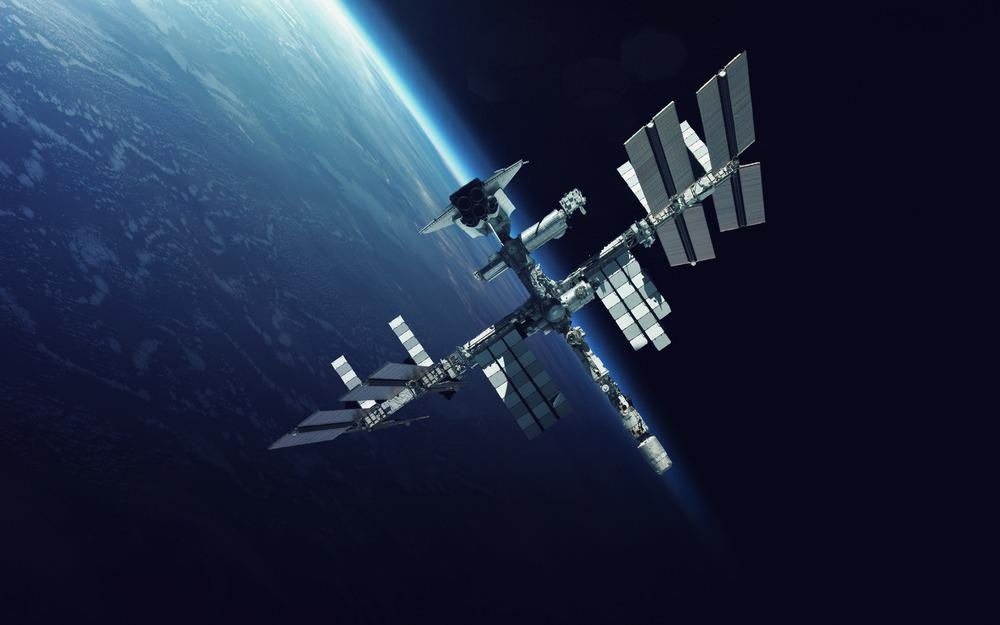
Image Credit: Vadim Sadovski/Shutterstock.com
On Earth, dust particles eventually settle on a surface, where they can get sucked up by a vacuum cleaner or wiped up with a cloth. This does not happen on the International Space Station (ISS). Dust is common on the ISS, however, the tiny particles do not settle on a surface: they simply drift in the air.
In a recent study, researchers cataloged various on-board particulate matter found in two used vacuum bags from the ISS using scanning electron microscopy with energy-dispersive X-ray spectroscopy (SEM/EDX), and single-particle multi-element inductively coupled plasma mass spectrometry (sp-ICP).
SEM/EDX analysis revealed most of the larger particles collected were either biological in nature or clothing fibers. The sp-ICP study identified multiple specific particle compositions. A few of these, including stainless steel and aluminum-zirconium antiperspirant particles, are in line with the results of past analyses, the study team said.
Airborne dust is a problem for sensitive equipment and the astronauts residing on the station. Astronauts may encounter allergic reactions, and they are also concerned about microorganisms associated with various dust particles.
Air quality in the ISS is managed by high-efficiency particulate air (HEPA) filters and controlled for temperature, humidity, and flow. Air on the ISS is recirculated as a necessity.
Dust particles can be generated from a range of different sources, including astronauts and on-board equipment.
Dust and Microorganisms on the ISS
People living and working in enclosed environments are usually vulnerable to health problems related to dust-borne microorganisms. Even though the ISS air is constantly cleaned and under surveillance, ISS's microbial make-up is mostly unknown.
NASA has recognized the ISS microbiome as a critical target for recurring and future studies. There is a particular curiosity about how microbial communities respond to the various pressures unique to the environment, including microgravity, low nutrient-availability, and an elevated radiation level compared to that of Earth.
Because of the technically demanding methods needed for culturing many microorganisms, describing the human-associated microbial environment in the ISS is a significant challenge. However, it is essential to keep track of opportunistic pathogens, especially with lengthy human missions planned for the future. Comprehension of the ISS microbiome could also assist in the required upkeep of this enclosed residence as microorganisms' degradation can occur.
In a 2015 study, air samples gathered from the ISS were examined by conventional cultivation, adenosine triphosphate (ATP), and polymerase chain reaction (PCR) assays to calculate viable populations. The study discovered that human-specific microorganisms make a significant contribution to the microbiome on the space station. Corynebacterium and Propionibacterium were dominant in the ISS samples regarding viable and overall bacterial community make-up.
In a similar 2016 study, researchers cultivated and cataloged 17 species of bacteria and one fungal variety from 8- to 12-year-old dust samples gathered in the Russian section of the ISS. Many of the isolated samples exhibited powerful resistance to heat-shock and clinical antibiotics. Next-generation sequencing revealed human-linked microorganisms signatures, including Corynebacterium, Staphylococcus, and Coprococcus.
The 2016 study team also discovered specifically adapted, hardy microorganisms. Isolated specimens were proofed against desiccation, heat-shock, and common antibiotics. In total, 19 identified bacterial strains were tested for resistance to heat shock and antibiotics. The study team found all spore-forming strains could survive the heat-shock test while all but one of the non-spore-forming strains did not.
The same strains were evaluated for susceptibility to 17 common antibiotics. The study team found an impressive pool of antibiotic resistance. Only one strain did not show resistance to the administered antibiotics. Paenibacillus campinasensis was the most resistant, displaying resistance against 8 of 17 antibiotics.
In addition to bacteria, the researchers found a surprisingly high abundance of archaeal signatures. Archaea are typically considered common in extreme environments and are particularly well-adapted to those with energy limitations. In the study samples, the researchers generally found Nitrososphaera signatures owned by a group of ammonia-oxidizing archaea common to soil and hot springs. They are also found on human skin.
Additionally, the study researchers found that the microbial community seen in the archived samples from the Russian section of the ISS was dissimilar to samples obtained later in the ISS American section. For instance, the phylum Actinobacteria made up about 64% of all samples in the American section, while the archived Russian samples only held about 24%. Furthermore, the average abundance of Proteobacteria was approximately 8.7 times as high in the Russian samples than the American samples.
Resources and Further Reading
Jahn, L. et al. Single-particle elemental analysis of vacuum bag dust samples collected from the International Space Station by SEM/EDX and sp-ICP-ToF-MS. Aerosol Science and Technology. [Online} Available at: https://www.tandfonline.com/doi/full/10.1080/02786826.2021.1874610
Chechinska, A. et al. Microbiomes of the dust particles collected from the International Space Station and Spacecraft Assembly Facilities. Microbiome. [Online] Available at: https://microbiomejournal.biomedcentral.com/articles/10.1186/s40168-015-0116-3
Mora, M. et al. Resilient microorganisms in dust samples of the International Space Station—survival of the adaptation specialists. Microbiome. [Online] Available at: https://microbiomejournal.biomedcentral.com/articles/10.1186/s40168-016-0217-7
Disclaimer: The views expressed here are those of the author expressed in their private capacity and do not necessarily represent the views of AZoM.com Limited T/A AZoNetwork the owner and operator of this website. This disclaimer forms part of the Terms and conditions of use of this website.